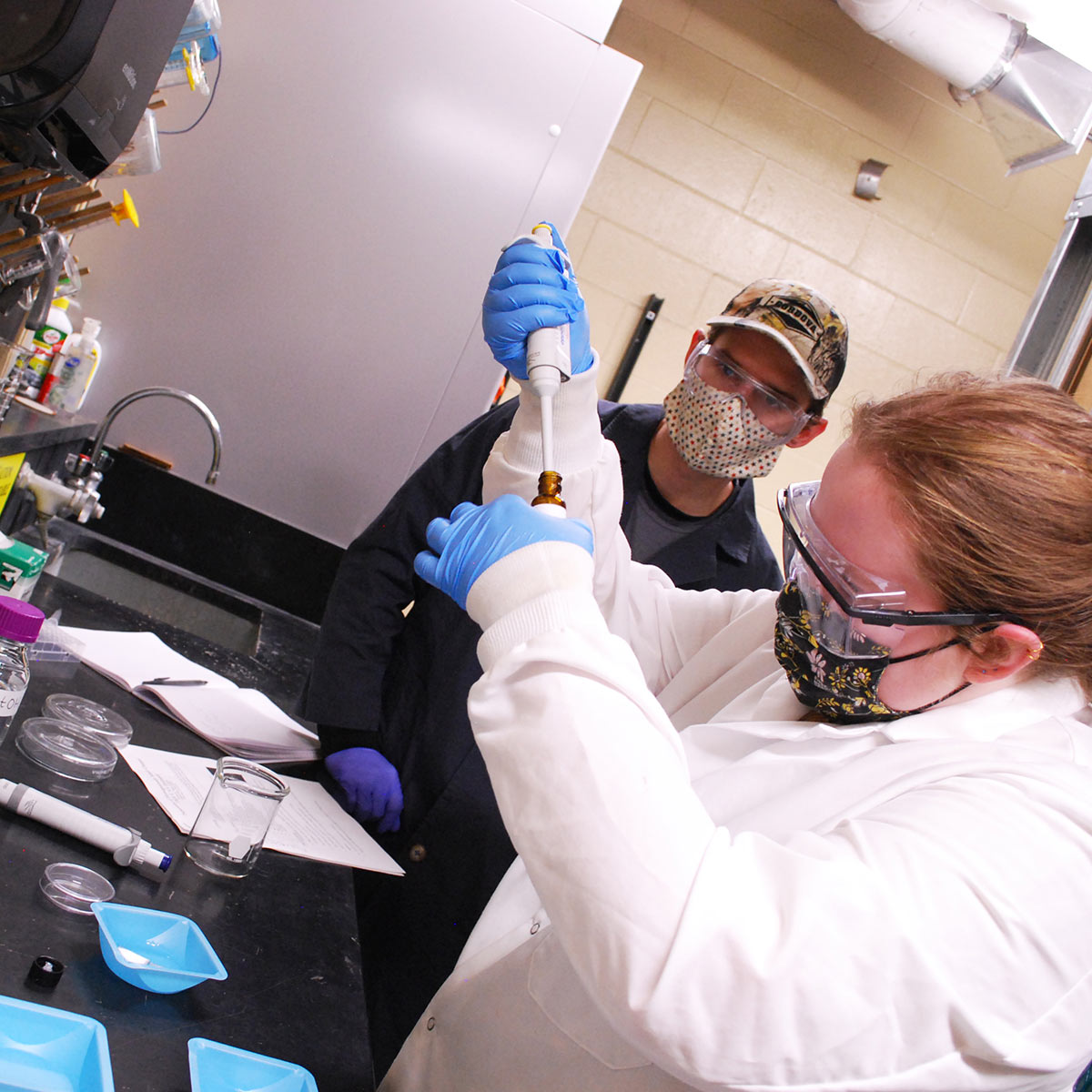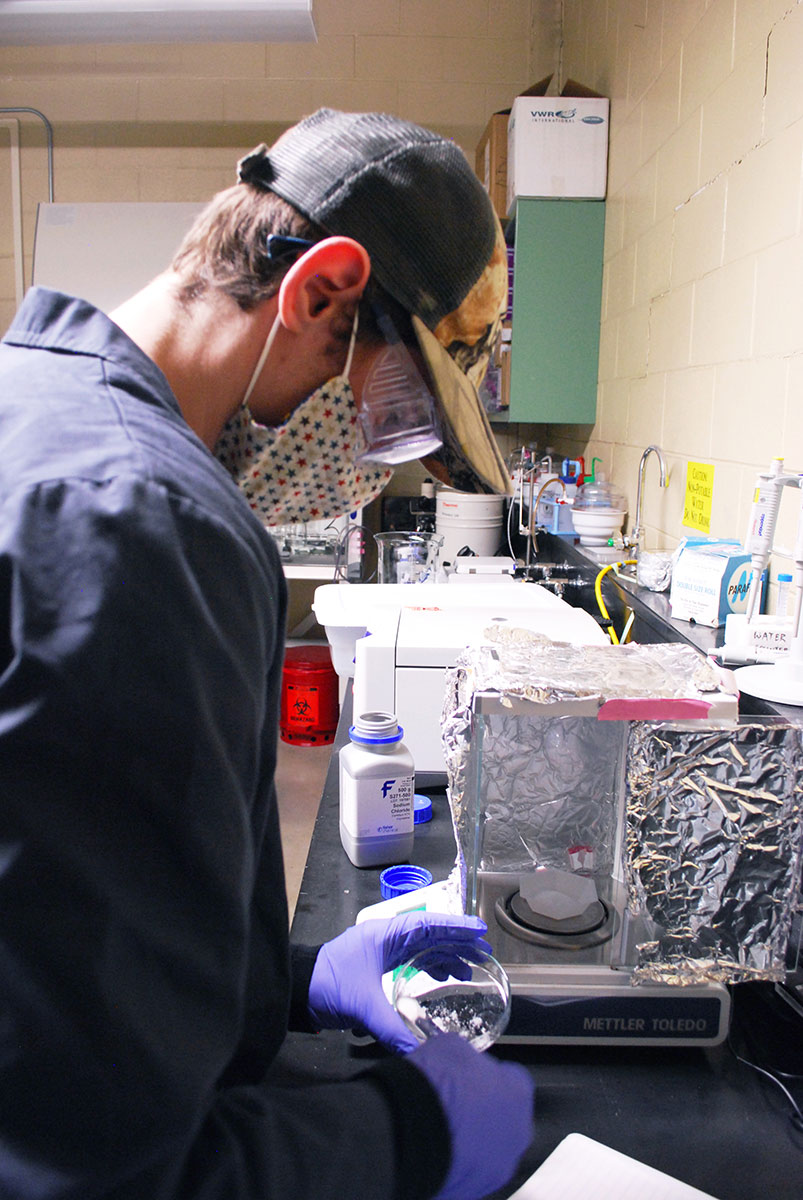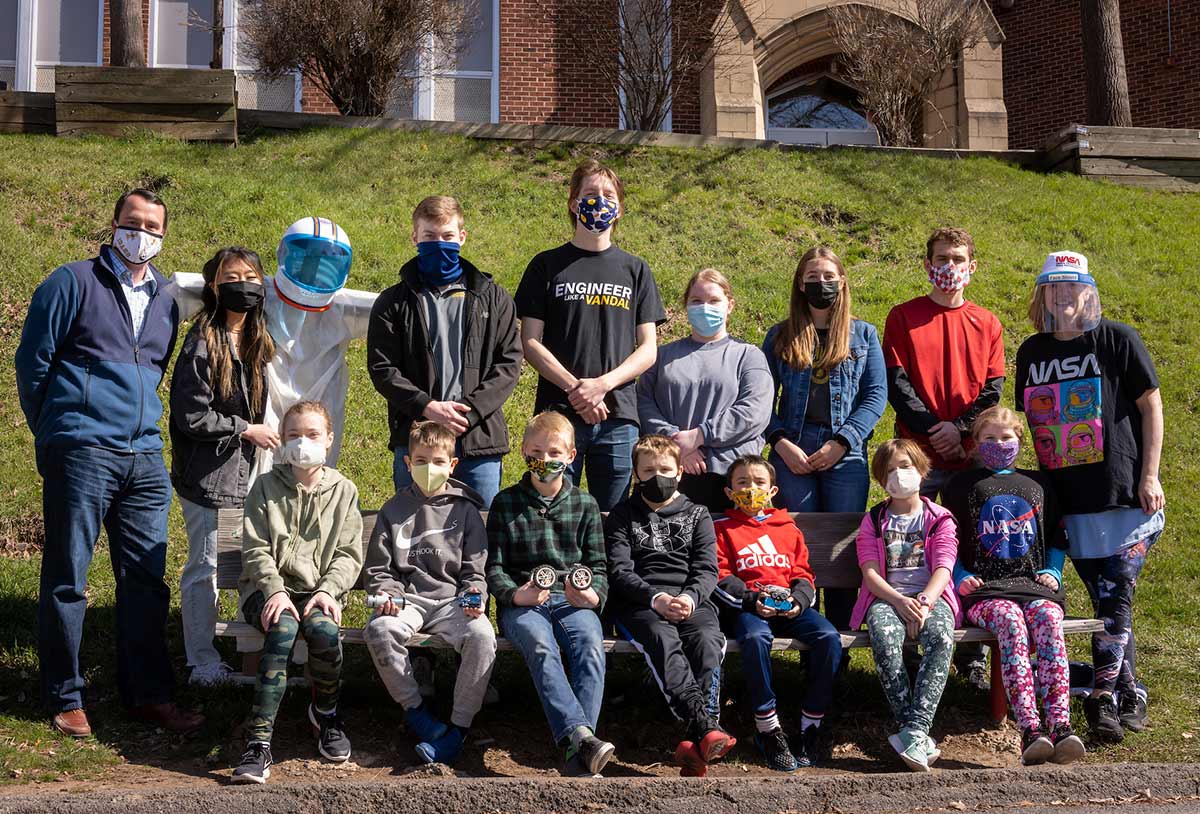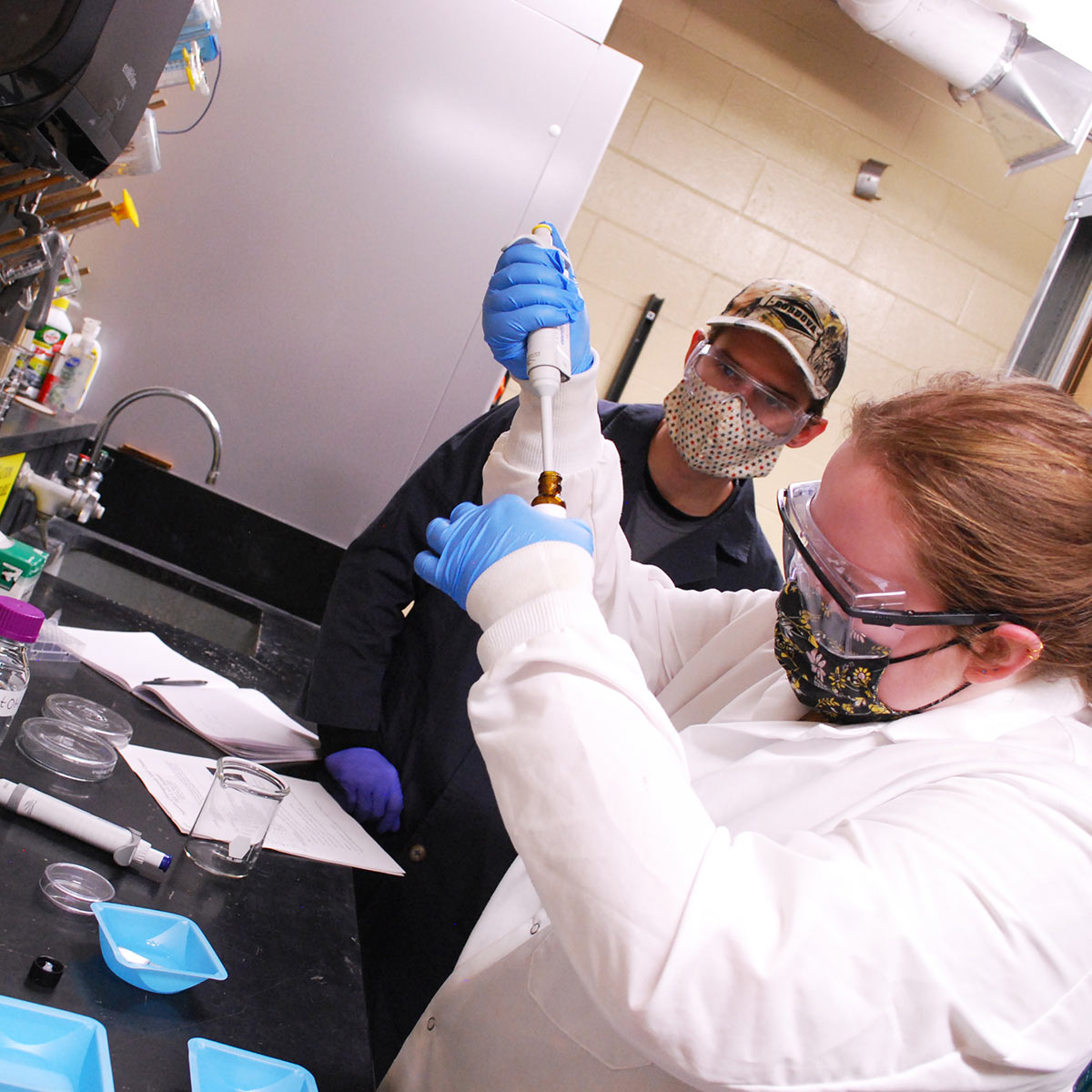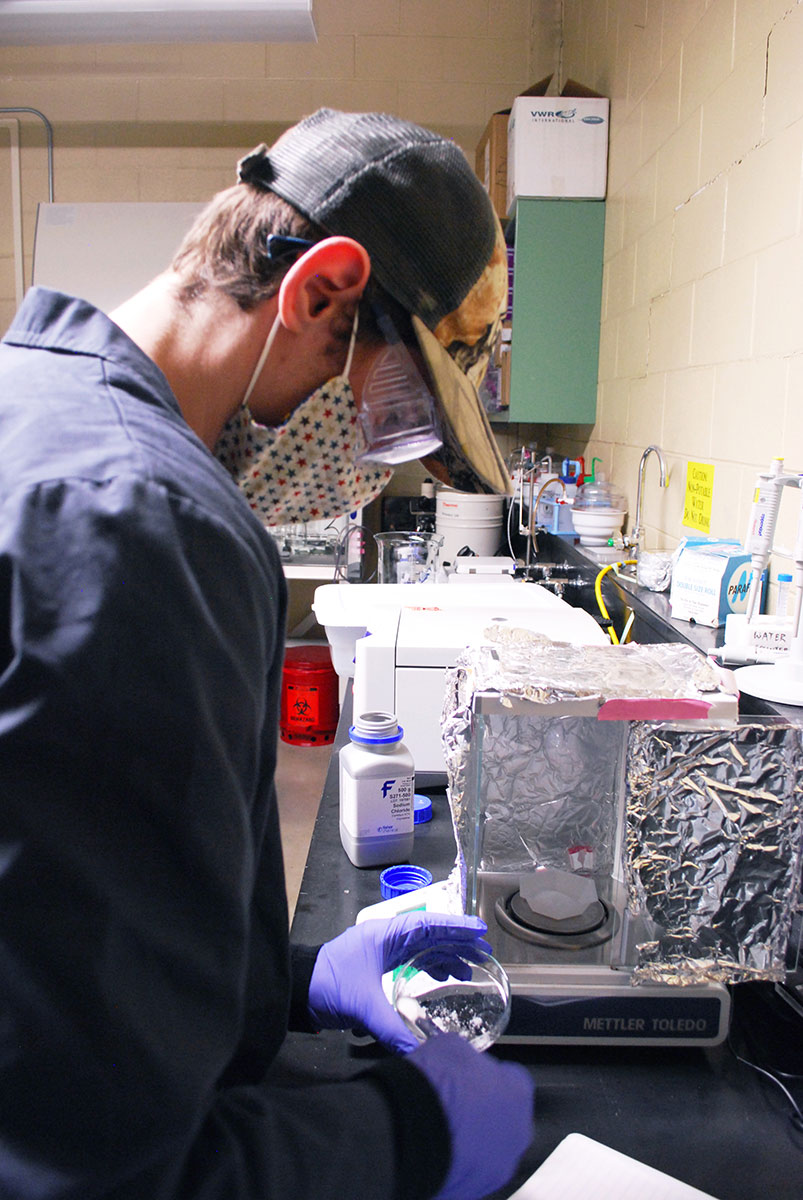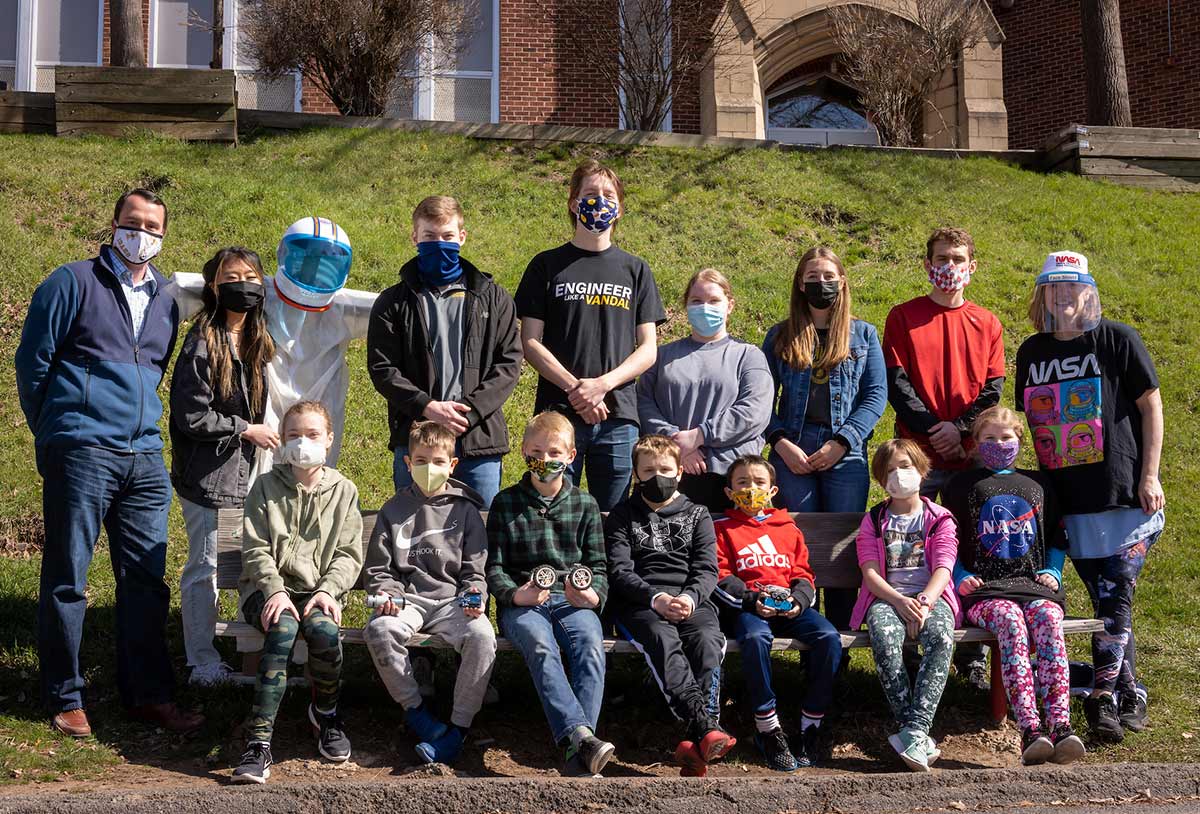Launching with NASA
Student team sends research to International Space Station as finalist in nationwide project
Vandal innovation has reached the International Space Station (ISS).
A University of Idaho College of Engineering team is one of five groups selected nationwide for NASA’s Student Payload Opportunity With Citizen Science (SPOCS) program to build an experiment that is currently aboard the ISS and will remain undisturbed for 30 days before returning to Earth.
The U of I team includes chemical engineering graduates Adriana Bryant, Hannah Johnson, Travis Lindsay, Roslyn McCormack, Niko Hansen and Kael Stelck, as well as current students Kaitlyn Harvey and Ashley Keeley. Led by Matt Bernards, NASA Idaho Space Grant Consortium Director and U of I chemical engineering associate professor, they spent the past year researching how microgravity impacts the efficacy of polymers known to resist bacteria on Earth.
“The goal of our project is to ultimately further space travel by reducing bacteria growth and disease on the International Space Station. In light of the COVID-19 pandemic, our experimentation could be potentially be utilized to prevent sickness here on Earth as well” Adriana Bryant, Senior in Chemical Engineering
“The goal of our project is to ultimately further space travel by reducing bacteria growth and disease on the International Space Station," Bryant said. “In light of the COVID-19 pandemic, our experimentation could be potentially be utilized to prevent sickness here on Earth as well.”
Synthesizing two types of polymers, the team is testing the ability of these molecules to resist bacteria on an aluminum alloy that is utilized for many high-contact areas throughout the ISS, such as hand rails and door handles.
The two polymers on the ISS have been selected using trials completed by third- through fifth-graders at J. Russell Elementary School in Moscow. As part of the NASA-funded project, teams are expected to involve K-12 students in their research.
Lindsay, McCormack and Stelck refined a non-toxic gel solution containing the bacteria-resistant polymers. Using petri dishes containing three different bacteria-resistant polymers and a control, elementary students were asked to get creative, collecting bacteria from various sources including sinks, floors, windows, lunch tables, keyboards and even a bottle of hand sanitizer.
“These students gave us 91 different data points to get a conclusion from,” said SPOCS Chief Citizen Science Officer Kael Stelck. “Our team would have had to do an incredible amount of work, especially with a project of that nature. It was really beneficial to have these young scientists run it.”
Over the course of 30 days, elementary students were asked to “feed” potential bacteria growth in their petri dishes using a nutrient broth designed to help bacteria thrive. Monitoring daily changes, students then reported which two polymers they believed to be the best candidates to send to the ISS.
The SPOCS team then analyzed the data to verify results and choose the top two performing polymers. The next major step will be to attach these polymers to aluminum plates and prototyping the container in which these research tools will be sent.
The SPOCS program is designed to celebrate NASA’s 20 years of humans in orbit on the ISS.
Article by Alexiss Turner
